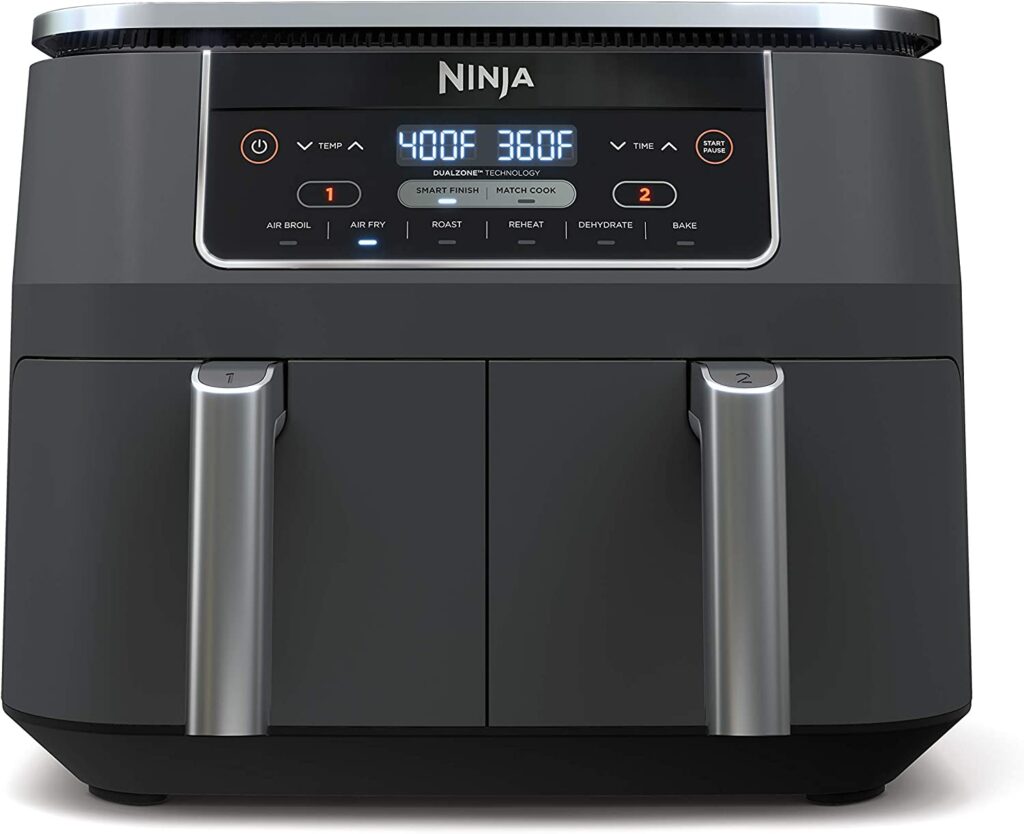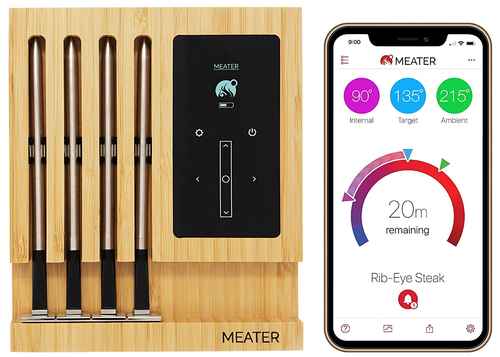The Versatile Spaghetti Squash: A Whole Air Fryer Recipe
Are you looking for a healthy and delicious alternative to traditional pasta? Look no further than spaghetti squash! This versatile vegetable can be transformed into a tasty low-carb and gluten-free dish that will leave you satisfied and wanting more. In this comprehensive article, we will delve into the science behind spaghetti squash, its culinary details, detailed selection and cleaning methods, proper preparation techniques, useful tips and variations, essential doneness checks, and a step-by-step recipe in the context of an air fryer. So, let’s dive into the world of spaghetti squash and discover the endless possibilities it offers!
The Science Behind Spaghetti Squash
Spaghetti squash, scientifically known as Cucurbita pepo, belongs to the Cucurbitaceae family, which includes cucumbers, melons, and pumpkins. This winter squash variety acquired its name from the unique and spaghetti-like texture of its flesh when cooked. The structure of this vegetable is composed of numerous thin strands that resemble spaghetti noodles, making it an excellent alternative for those seeking a healthier pasta substitute.
The flesh of spaghetti squash is not only visually appealing but also rich in vital nutrients. It is packed with antioxidants, vitamins A and C, potassium, beta-carotene, and dietary fiber, making it an excellent choice for promoting a well-balanced diet. Additionally, due to its high fiber content, spaghetti squash aids in digestion, supports weight management, and helps regulate blood sugar levels.
Culinary Details: Selection and Cleaning
Selecting the Perfect Spaghetti Squash
When choosing a spaghetti squash, opt for one that is firm, dense, and heavy for its size. Avoid squash with any soft spots or blemishes, as this may indicate spoilage. The skin should have a vibrant yellow or golden color, preferably with a matte finish. The stem should be intact, as a missing stem could indicate an older squash that may have lost some of its freshness.
Cleaning the Spaghetti Squash
Before diving into the cleaning process, it’s important to note that you should not wash the squash before storing it. The moisture can accelerate spoilage. Instead, clean your spaghetti squash immediately before preparing it.
To clean the squash, gently scrub the outer skin under cool running water using a soft-bristle brush to remove any dirt or debris. Once clean, pat it dry with a clean kitchen towel. This step ensures that no unwanted particles end up in your final dish.
Preparing the Spaghetti Squash for Cooking
Now that you have chosen and cleaned your spaghetti squash, let’s explore the different methods of preparing it for cooking. In this article, we will focus on the innovative and time-saving technique of cooking the whole squash using an air fryer.
Whole Spaghetti Squash in the Air Fryer: Cooking Basics
-
Start by preheating your air fryer to 375°F (190°C) for approximately 5 minutes. This will ensure that the squash cooks evenly and thoroughly.
-
Using a sharp knife, create a few small, shallow slits on all sides of the squash. This will prevent the squash from bursting while cooking, allowing steam to escape.
-
Place the whole spaghetti squash into the air fryer basket, ensuring that it fits comfortably without overcrowding. If necessary, cook multiple squash halves separately.
-
Cook the squash for 35-45 minutes, depending on its size. You may need to adjust the cooking time slightly based on your air fryer’s specifications. The squash is ready when the outer skin can be easily pierced with a fork.
Essential Doneness Checks
To ensure your spaghetti squash is perfectly cooked, perform a doneness check using a fork. Gently insert the tines of the fork into the squash’s flesh. If the fork effortlessly penetrates the flesh and creates long, thin strands that resemble spaghetti, your squash is cooked to perfection.
Tips and Variations
Flavorful Enhancements
While spaghetti squash possesses its own natural flavor, you can enhance it with various seasonings and sauces. A popular option is to toss the cooked squash strands with a drizzle of olive oil, freshly minced garlic, grated Parmesan cheese, and chopped parsley. You may also experiment by adding your favorite herbs, such as basil or oregano, to infuse additional flavor into the dish.
Creative Additions
To take your air fried spaghetti squash to the next level, consider incorporating other ingredients. For a colorful and nutritious twist, mix in some sautéed bell peppers, diced tomatoes, or even lightly steamed broccoli florets. You can also experiment with adding protein sources like grilled chicken, shrimp, or tofu for a more well-rounded meal.
Meal Prep Made Easy
Spaghetti squash is an excellent candidate for prepping ahead. Once cooked and shredded, store the squash strands in an airtight container in the refrigerator for up to 3-4 days. This allows you to effortlessly add it to your meals throughout the week, cutting down on cooking time and ensuring you have a healthy option readily available.
Whole Air Fryer Recipe: Spaghetti Squash Delight
Now, let’s put everything we’ve learned into practice with a step-by-step recipe for whole spaghetti squash cooked in an air fryer.
Ingredients:
- 1 whole spaghetti squash
- Olive oil
- Salt and pepper to taste
- Desired seasonings and toppings (e.g., garlic, Parmesan cheese, parsley)
Instructions:
- Preheat your air fryer to 375°F (190°C) for 5 minutes.
- Prick the squash several times using a knife.
- Place the whole spaghetti squash into the air fryer basket. Cook for 35-45 minutes, or until the skin is fork-tender.
- Carefully remove the squash from the air fryer and allow it to cool for a few minutes.
- Once cooled, slice the squash in half lengthwise.
- Using a spoon, remove the seeds and discard them.
- Use a fork to scrape the flesh, creating long strands of spaghetti-like squash.
- Transfer the strands to a bowl and drizzle with olive oil, salt, pepper, and any desired seasonings.
- Gently toss the spaghetti squash strands to evenly distribute the seasonings.
- Serve the spaghetti squash immediately, or top it with grated Parmesan cheese, garlic, and parsley for added flavor.
Bon appétit!
Conclusion
Congratulations! You have now mastered the art of cooking whole spaghetti squash in an air fryer. We explored the science behind this versatile vegetable, its culinary details, the selection and cleaning process, essential preparation techniques, helpful tips and variations, necessary doneness checks, and a detailed recipe. Spaghetti squash opens up a world of opportunities for creating healthier, low-carb dishes while maintaining a delightful and familiar pasta-like experience. So, why not embark on this flavorful journey and savor the goodness of spaghetti squash in every bite?
Sources
FAQS On Spaghetti Squash Whole Air Fryer Recipe
What Is Spaghetti Squash?
Spaghetti squash is a type of winter squash that has a yellow, oval-shaped fruit with a stringy flesh that can be cooked and served like spaghetti noodles.
How Do You Prepare Spaghetti Squash For Air Frying?
To prepare spaghetti squash for air frying, cut off the stem, halve it lengthwise, and scoop out the seeds. Brush the cut sides with oil and season with salt and pepper or your preferred spices.
How Long Does It Take To Air Fry Spaghetti Squash?
Air frying spaghetti squash takes about 15-20 minutes, depending on the size and thickness of the squash. You will know it’s done when the flesh is tender and easily separates into noodle-like strands.
What Temperature Should I Set My Air Fryer To For Spaghetti Squash?
Set your air fryer to 375°F for cooking spaghetti squash. This temperature ensures that the squash cooks evenly and develops a slightly crispy texture on the outside.
Can I Add Other Ingredients To My Spaghetti Squash In The Air Fryer?
Yes, feel free to add any vegetables, herbs, or seasonings you like to your spaghetti squash before air frying. For example, you can add garlic, onion, bell pepper, or mushrooms for added flavor.
How Do I Store Leftover Spaghetti Squash Cooked In The Air Fryer?
Let leftover spaghetti squash cool to room temperature, then transfer it to an airtight container and store it in the refrigerator for up to 3 days. You can reheat it in the air fryer or microwave.
What Are Some Ways To Serve Spaghetti Squash Cooked In The Air Fryer?
There are many ways to enjoy spaghetti squash cooked in the air fryer. You can serve it as a side dish with chicken or fish, use it as a base for a vegetable bowl or salad, or toss it with tomato sauce and Parmesan cheese for a low-carb pasta alternative.


